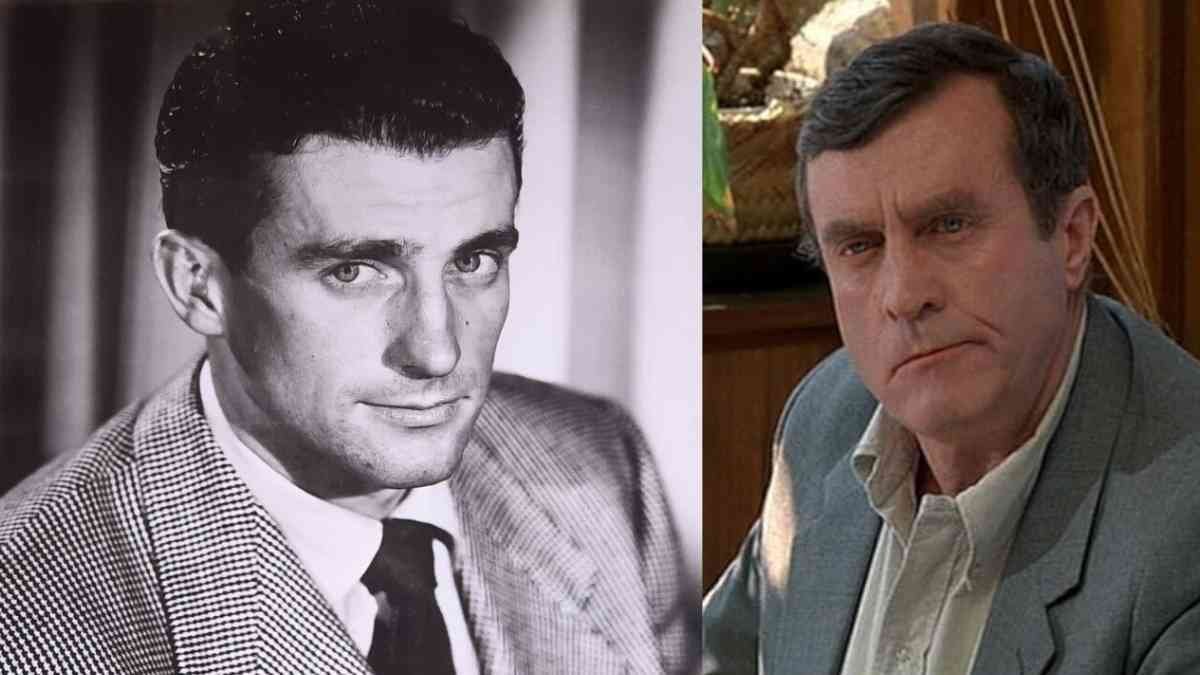William Boyett: The Trusted Face Behind the Badge
A look at the enduring legacy of television’s most dependable lawman

William Boyett was not a leading man in the conventional Hollywood sense, yet his face became a fixture in American households for decades. He was the kind of actor whose presence brought credibility, whose characters exuded discipline and quiet strength. Most notably remembered for his role as Sergeant MacDonald in Adam-12, Boyett’s legacy as a reliable on-screen lawman has become part of the cultural DNA of American television.
Early Life and Family
Born on January 3, 1927, in Akron, Ohio, William Boyett spent his early years in Waco, Texas, before moving to Los Angeles, California, with his family in the early 1940s. He attended Dorsey High School, where he first caught the acting bug after winning a Shakespeare competition. That moment marked the beginning of a lifelong passion for performance.
He later attended the University of Southern California, where he studied radio and television, laying the groundwork for a career that would stretch over four decades. His family background remained relatively private, but he was known to be a committed family man. He married Joan Reynolds in 1957, and the couple had two children together. He was previously married to Willagene Wither from 1947 to 1950.
Service and Discipline
Before launching his acting career, Boyett served in the United States Navy during World War II. Stationed in the Pacific Theater, his military experience would later contribute to the authenticity of the many authority figures he portrayed. His roles often reflected the values he embodied in real life: honor, loyalty, and duty.
Stepping Into Hollywood
After returning from military service, Boyett initially turned to the stage, performing in New York City and Los Angeles. His deep voice and composed presence made him a natural fit for early television and radio dramas. His screen debut came in the early 1950s, with supporting roles in B-movies like Street Bandits (1951) and Vice Squad (1953). These appearances introduced audiences to his consistent screen persona—a man who could be trusted, whether in uniform or out.
Television Stardom Begins
Boyett’s breakthrough came when he was cast in Highway Patrol (1955–1959), starring Broderick Crawford. He played Sergeant Ken Williams, the right-hand man in the series, and his portrayal set the tone for much of his career. The show was a success, and Boyett’s commanding yet approachable demeanor resonated with viewers.
He was later featured in multiple episodes of Dragnet, both in its 1950s original version and its 1960s revival. These roles further cemented his identity as a television lawman. He often collaborated with Jack Webb, the show’s creator, who appreciated Boyett’s quiet intensity and understated delivery.
Signature Role in Adam-12
In 1968, Boyett took on what would become his most iconic role: Sergeant William “Mac” MacDonald in Adam-12. The show followed two young police officers of the Los Angeles Police Department and depicted their day-to-day challenges. Boyett played their watch commander, a steady and fair leader who rarely raised his voice but commanded complete respect.
His performance brought a sense of calm authority to the show, portraying a supervisor who led by example. Viewers admired his character’s integrity and quiet strength—qualities that Boyett seemed to possess off-screen as well.
More Read: Erica Stoll: The Woman Who Captured Rory McIlroy’s Heart
Continuing the Theme in Emergency!
Boyett carried over his law enforcement image into Emergency!, a sister show to Adam-12. He played Battalion Chief McConnikee, a firm yet compassionate leader in the Los Angeles Fire Department. He reprised this role in various episodes and made-for-TV films tied to the series.
Film Appearances and Broader Work
Though television remained his stronghold, Boyett appeared in several films throughout his career. Notable among them were:
- Forbidden Planet (1956)
- The Hidden (1987)
- The Rocketeer (1991)
- Newsies (1992)
Each of these films showcased his versatility in small but memorable roles. He also guest-starred in shows such as Star Trek: The Next Generation, Perry Mason, and The Waltons. In Star Trek: TNG, he played Lieutenant Dan Bell in the episode “The Big Goodbye.”
Physical Appearance and Presence
William Boyett stood around 5 feet 11 inches (180 cm) tall. His stature, combined with a strong jawline and calm gaze, made him the perfect fit for roles requiring poise and strength. His voice carried authority, and his posture communicated control, both essential for the police roles he frequently portrayed.
Acting Style and Strengths
Boyett’s talent lay in his subtlety. He didn’t need grand gestures or melodramatic lines to make an impression. His characters often spoke softly, thought carefully, and acted decisively. That restraint was his strength. He portrayed law enforcement figures who were neither corrupt nor overly idealized—they were simply dependable.
He had a unique ability to anchor a scene, allowing other actors to shine while maintaining his own firm presence. It’s a skill that made him a favorite among directors and a calming influence on set.
Later Life and Legacy
After a fulfilling career, Boyett gradually retired from acting in the late 1990s. He spent his final years in Mission Hills, California, where he passed away on December 29, 2004, just days before his 78th birthday. The cause of death was reported as complications from pneumonia and kidney failure.
His passing marked the end of an era for many fans of classic TV, but his work continues to live on through syndication and streaming. His characters are often described as timeless because of their simplicity, honor, and realism.
Net Worth and Recognition
While exact figures are speculative, it’s estimated that William Boyett had a net worth of around $1 million at the time of his death. He wasn’t known for extravagant living or chasing celebrity status. Instead, he focused on consistent work and building a solid reputation in the industry.
Though he never won major acting awards, his career itself is a testament to success. In an industry known for its volatility, Boyett found longevity, respect, and admiration—qualities many actors strive for and few achieve.
Social Media and Public Engagement
As Boyett’s peak years were long before the social media era, he didn’t maintain a public presence on platforms like Instagram or Twitter. However, fan communities continue to share his legacy through tribute posts, forums, and classic television discussions. His characters remain frequent topics among enthusiasts of 1960s and 1970s crime dramas.
The Man Behind the Roles
Despite his many on-screen appearances, Boyett was known to be a humble and private man off-camera. He rarely gave interviews, preferring to let his work speak for itself. Colleagues often described him as disciplined, respectful, and professional—a perfect mirror of the characters he portrayed.
He showed that you don’t need to be a superstar to be unforgettable. With quiet dedication, he became the backbone of some of the most respected police dramas in television history.
Conclusion
William Boyett didn’t chase the spotlight. Instead, he built a career grounded in consistency, dignity, and realism. He became the face viewers turned to when they needed to believe in order, fairness, and quiet authority. In a world that often celebrates flash over substance, Boyett proved that integrity leaves a deeper mark.
His life and work remain an example of how enduring character—not just on screen, but in real life—can build a legacy that lasts well beyond the final credits.
Honor William Boyett’s legacy by revisiting the shows that defined his extraordinary career.



